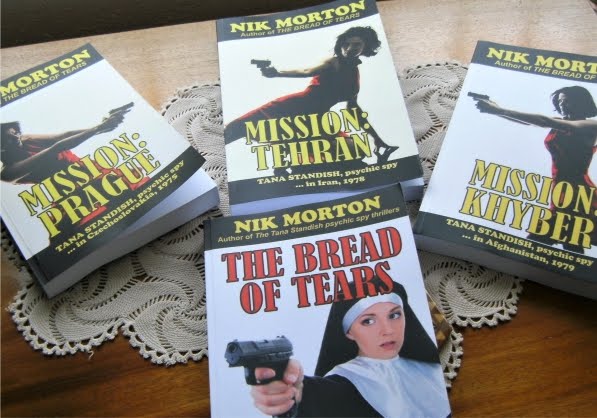The film suffered a severe savaging from many critics on both sides of the pond. Almost without exception, the majority of them hadn’t read the source material and bemoaned the fact that there wasn’t much original in the film. Some had the good grace to accede that the Edgar Rice Burroughs Martian tales were often the inspiration for the many sci-fi flicks over the last hundred years (that is, his ideas were pinched). Some blamed the poor marketing of the film. Others targeted the main actors, and the dialogue. A few didn’t quite grasp information that was offered in the script – maybe they were tucking into their gourmet cinema meal at the time – such as Carter’s ability to leap great distance, attributed to the lower gravity of Mars. One reviewer in UK commented that A Princess of Mars was ‘hailed as a geek classic’ – that must therefore include those well known geeks, astrophysicist Carl Sagan and literary luminary Ray Bradbury, both of whom went on record more than once that Burroughs’ Barsoom novels inspired them to follow their respective careers.
Well, all those naysayers are mightily wrong. Maybe they were all suckered into ‘adulation of The Artist mode’? Just take a look at the reviews on Amazon. When I ordered the DVD there were already many very favourable comments, deriding the critics. Now, as I write this, the combined 4 and 5 star reviews total 602 out of 698 – that’s 86%. The rotten tomato reviews clock it at 52% ‘suffers from uneven pacing, incomprehensible plotting and characterisation.’ Forget all that. The plot and characterisation are not incomprehensible, though in common with most modern action movie scripts you do have to pay attention to what is being said… If ever a film was badly served by the media, then this was it.
Cinema has many purposes – but primarily it’s intended to entertain. John Carter did that with gusto. This was a fantasy film designed for the big screen, with spectacular scenery, epic scenes, gorgeous colour, fabulous costumes, characters true to the books, and a sense of wonder tinged with modern sensibilities. Utah served well as Barsoom. The tharks were superb, in creation and depiction, seeming totally natural. The flying machines were definitely otherworldly. The city of Helium was impressive, as was the thunderous mobile city of Zodanga. There was pathos, humour, irony, romance, bravery and betrayal within the 127 minutes of film; the time flew by – and I for one wanted more!
Direction, script, music score, film, actors, and special effects – none deserved the mauling the critics dished out. This was a splendid visualization of an imaginative adventure lovingly plucked from the pages of a 1912 best-selling story. There were clever touches in the script, notably including Burroughs in the bookend vignettes. This also rang true to the first person narrative of the original. The evil Therns were endowed with additional powers and knowledge, granted, but they were not far removed from the conniving beings of the books. (See my drawing of August 1963, ‘Attack on the holy Therns’ (The Gods of Mars).)
Maybe another fifteen minutes would have deepened the characterisation of some. But essentially this was a fast-paced exotic story and in-depth characterisation would only have slowed it down. Taylor Kitsch delivered a strong man tired of war and death, while Lynn Collins as Dejah Thoris embodied in every way the beauty and strength of the princess of Mars. Though heavily disguised by CGI effects, Samantha Morton (no relation) captured the essence of Sola, her fragility and compassion. William Dafoe’s Tas Tarkas was great, too. And Mark Strong as the inimical Matai Shang, chief Thern, proved he can play villains with consummate ease, but never hams it up. Woola was engaging, even with six legs and deadly incisors – and not dissimilar to my drawing of Woola and John Carter battling the deadly Sith (Warlord of Mars).
I agree that the marketing was poor. The DVD cover is lacklustre. And as for putting up the quote ‘Star Wars for a new generation’, they’d have been better employed stating: ‘Before Avatar, before Star Wars, before Star Trek, before Flash Gordon – there was John Carter of Mars!’ Initially, I sympathised with the critics of the choice of film title and felt that John Carter of Mars would have been better, as it would leave no filmgoer in doubt. But then I saw the end of the film and it seemed right – until the end, he’d been John Carter of Earth. But at the end, when he married Dejah Thoris, he became John Carter of Mars, and that’s the title that’s shown – heralding at least two sequels. Two sequels that are sadly now probably stillborn due to the misguided marketing and reception of this first epic adventure.
If you haven’t seen this film because you were put off by the critics, then ignore them and buy it. Buy it and prove them wrong. It’s escapist fantasy of the highest order.




























